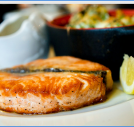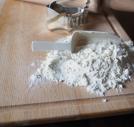1300-Calorie Diabetic Diet: One of The Most Common Options For Weight Loss
A 1300-Calorie diet is a way of eating that limits your daily calorie intake to only 1300 calories a day. This is considered a low calorie diet, because it is significantly lower in calories than what you should normally have on a daily basis.
A calorie is energy. Calories are a way of keeping track of our bodys energy budget. The more we put in and don´t use, the more we gain in weight. And when we use more than we put in, we loose weight. So it is about finding balance in our bodys “energy budget” to keep our weight at a certain level.
The normal calorie intake for men and woman on a daily basis depends on factors like hight, weight, age, gender, muscle mass, activity, where you live etc. But on average the normal intake of calories for men are 2500 calories per day, and 2000 calories for woman per day.
A 1300 calorie diet for diabetics is highly recommended by health proffesional for weight loss. It is very easy to follow but before anyone begins on this journey, individuals need to check if it will work for their body or not, as they need to know if 1300 calories are enough for them to keep their bodies healthy.
One can have too few calories, and one needs to make sure that one has enough for all the bodily functions to function optimally too. We need calories to think, we need calories for our eye lids to function. In short, we need enough energy, calories for our bodies to keep in running order.
The minimun amount of calories usually recommened are 1200 calories per day.
Here are two important things you should consider before starting out on a 1300 calorie diet.
- Your body’s metabolism – If your body´s metabolism is high, you need more calories. Ex. If you are physically active, your metabolism is higer, and you will require more calories.
- A physicians recommendation - never start a diet without your doctors approval or recommendation.
Diabetics and the 1300 calorie diet
Many who are diagnosed with diabetes are then introduced to weight loss plans that are compatible with a diabetic nutritional diet. For most, diabetes is exacerbated or even largely caused by being overweight, but losing weight as a diabetic is not always easy thanks to the nutritional restrictions diabetics have.
The 1,300 calorie diet is one of the most common options given to patients to help manage weight loss. As its title implies, it's simply a diabetic-friendly diet that contains about 1,300 calories of daily intake. For most, this is enough to maintain energy levels, but not body fat, and it usually results in about 20 pounds of weight loss in 6 weeks or so.
The Diabetic Exchange Diet
Often called the "diabetic exchange diet" as part of a larger suite of diets with varying caloric totals, this diet uses simple exchanges of nutritional types to balance the needs of the patient with the lowered calories required to lose weight.
The "exchange" comes from the ability for the dieter to pick and choose various foods from specific groups. For instance, the "cup of nonfat milk" at breakfast can be exchanged for a 6 oz serving of non-fat, sugar-free yogurt.
The diabetic exchange diet contains:
- A lot of whole-grain foods, including brown rice, millet, oatmeal, whole-wheat bread, etc.
- Many legumes like chickpeas, lentils, peas, kidney beans, black beans, soybeans, pinto beans, and navy beans.
- Healthy nuts and seeds as well, like almonds, pistachios, walnuts, cashews, pecans, macadamia nuts, and hazelnuts.
- Leafy vegetables, include Kales, collard greens, spinach, cabbage, beet greens, and lettuce.
- Fruits like bananas, oranges, apples, pineapples, watermelons, peaches, grapefruits, avocados, blueberries, mangoes, strawberries, and pomegranate.
- Low-fat dairy products.
- Low-calorie meats, such as boneless and skinless chicken breasts, turkey breast, pork tenderloin, fish and seafood, salmon, and scallops.
Foods Grouped Into Types
Foods are grouped into types: starch, meat, fruit, milk, fat, etc. So a typical 1,300 calorie diet breakfast would include 2 starches, 1 meat, 1 fruit, 1 milk and 1 fat. This could translate to 3/4 cup of whole-grain cereal in one cup of non-fat milk, a slice of whole what toast with margarine (1 tbs), a single scrambled egg and an orange.
Lunch on a 1,300 calorie diet is similar with 3 starch exchanges, 2 meat exchanges, 1 fruit exchange, 1 vegetable exchange, 1 milk exchange, and 1 fat exchange. Dinner (supper) would be 3 starches, 2 meats, 1 fruit, 2 vegetable, and 1 fat.
Any item can be removed from the menu at mealtime and used as a snack between meals in most exchange diet plans as well.
Speak with your health care provider or diabetes support group for more information on exchange dieting and where you can find the resources and materials you'll need to begin. Make sure your diet is physician-approved before starting.
Photo: Pexels



































